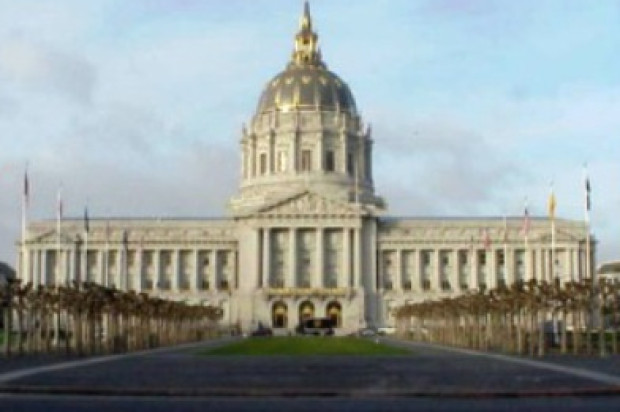
The 100-year-old San Francisco City Hall is now the world’s oldest building to receive LEED Platinum certification for existing building operations and management, according to the U.S. Environmental Protection Agency.
U.S. EPA director Gina McCarthy and San Francisco city administrator Naomi Kelly announced city hall’s Leadership Energy and Environmental Design (LEED) Platinum certification today, explaining that due to the building’s old age, City Hall is actually certified LEED Platinum, but in the category of existing building operations and management (EBOM).
LEED EBOM Platinum certification means the building has undergone improvements, but little to no construction, according to the U.S. Green Building Council.
McCarthy said San Francisco City Hall is more energy efficient than 90 percent of similar buildings across the country and that it deserves the LEED certification, which proves that “you can teach an old building new tricks.”
McCarthy said that California is enduring its fourth year of drought and needs all the help it can get to be proactive, not just reactive.
“Clearly we have to do more,” she said.
City Hall’s new energy and water saving operations are the result of a multi-year retrofit.
Funds from the EPA’s $700,000 Civic Center Sustainable District Grant supported the replacement of over 90 toilets and urinals with high-efficiency models, according to the San Francisco Public Utilities Commission.
That grant continues to support water efficiency retrofits at other buildings in the Civic Center neighborhood, according to the SFPUC.
SFPUC electric ratepayers funded operational and energy efficiency upgrades.
City Hall, with 100 percent greenhouse gas-free electricity supply from the SFPUC’s Hetch Hetchy Power System, was already one of the most sustainable historic buildings in the country, according to the SFPUC.
At City Hall, the new water efficiency upgrades are estimated to save roughly 825,000 gallons of drinking water per year.
A newly reconfigured ventilation and heating system monitors temperature and carbon dioxide levels. It circulates fresh air when a room is filled with people and cools the building.
McCarthy said LEED certification guidelines are getting tighter all the time and that if old buildings like City Hall are able to achieve it, there’s no excuse for other buildings not to achieve it as well.
While LEED certification recognizes best-in-class build strategies and practices, there is a growing chorus of critics who maintain that LEED certification rewards minor, low-cost steps with little environmental benefit and that more needs to be done in the U.S. to require all buildings to be sustainably designed and built.
Among the most famous critics is world-renowned architect Frank Gehry, who argues that the U.S. government needs to enact tougher building standards and require that designers and builders address sustainability issues prior to being granted building permits.
Hannah Albarazi, Bay City News









